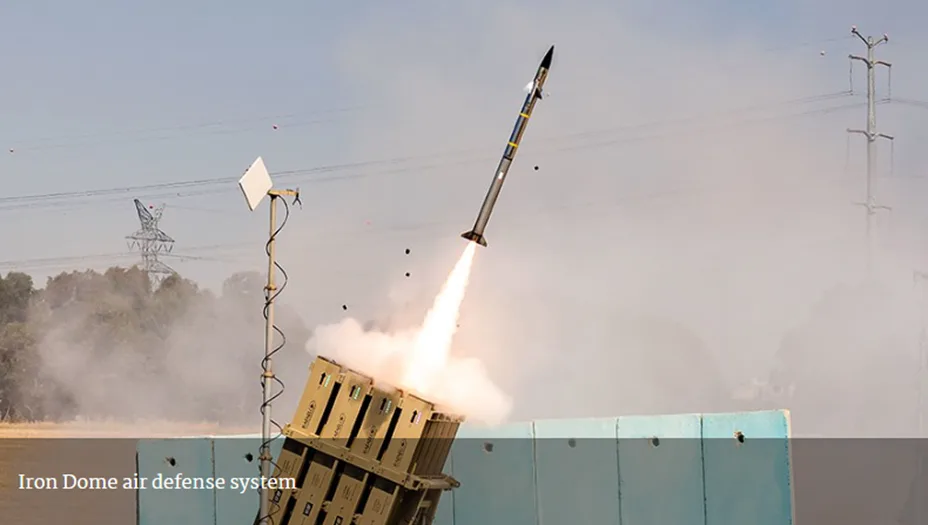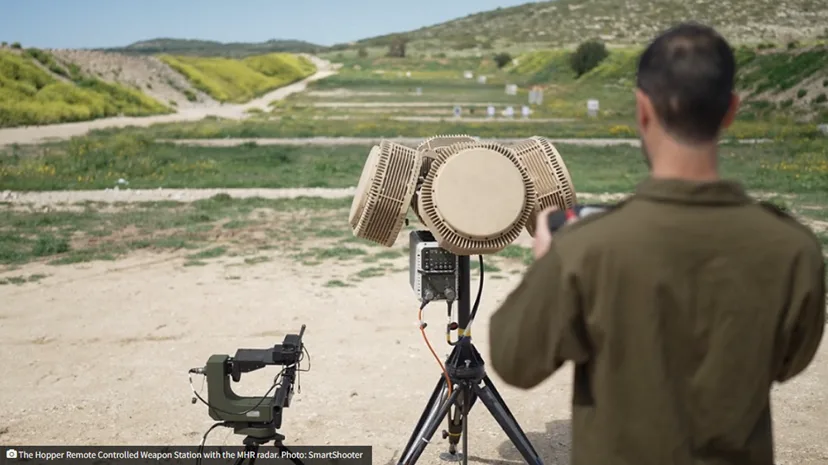This Week in Laser News – What’s Going on With HELs (Week of January 27th 2025)
This week, we have a lot of articles discussing Israel’s Iron Dome technology along with some reporting on the newly signed executive order in which President Trump directs the creation of an Iron Dome for America.
News roundup by Caleb Hoover
Tuesday January 28th 2025
Article Info
This week, Israel Defense released an article titled “Rafael Presented its High-Energy Laser Systems at IAV 2025”
Article Summary
October 2024 marked the debut of Rafael’s Lite Beam, a 10-kW laser weapon system designed to counter aerial threats.
At last week’s International Armored Vehicles (IAV) 2025 conference in the UK, Rafael showcased both the Lite Beam and its more powerful counterpart, the Iron Beam High Energy Laser (HEL) system. The Lite Beam boasts an engagement range of 2–3 km, while the Iron Beam is reported to have significantly greater range.
There appears to be a clear division in their intended roles: Lite Beam is likely suited for mobile, maneuvering forces, providing overwatch protection, whereas Iron Beam is expected to be deployed in fixed defensive positions. The Iron Beam is slated to become fully operational and transition to the Israeli Air Force by the end of 2025.
Article image: An F-16 (Picture source: Rafael website)

Tuesday January 28th 2025
Article Info
National Defense Magazine published an article titled “JUST IN: Trump Revives Reagan’s ‘Star Wars’ Missile Defense Aspirations” by Stew Magnuson
Article Summary
On January 27, 2025, President Trump signed an executive order titled “The Iron Dome for America,” signaling a renewed focus on missile defense.
Section 3 of the order directs the Secretary of Defense to develop a plan for protecting the U.S. against ballistic, hypersonic, and advanced cruise missiles, as well as other next-generation aerial threats from peer, near-peer, and rogue adversaries.
For context, Israel’s Iron Dome operates 10 batteries to defend an 8,000-square-mile area—a stark contrast to the United States’ vast 3.5 million square miles, raising questions about how such a defense system could scale.
Of particular interest to directed energy advocates, the executive order also calls for the “development and deployment of non-kinetic capabilities” to complement kinetic missile defenses. While “non-kinetic” is a broad term, it often includes technologies like High Energy Lasers (HELs) and High Power Microwaves (HPMs). Could this signal a larger role for directed energy weapons in America’s next-generation missile defense strategy?
Image caption: Iron Dome air defense system (from the article)

Wednesday JaNUary 29th 2025
Article Info
The Financial Times has an article by Felicia Schwartz, Joe Miller and Steff Chávez in Washington, John Paul Rathbone, Ian Bott and Michael Peel in London and Kathrin Hille in Taipei
titled “Donald Trump’s plan for space lasers to destroy nuclear weapons”.
Article Summary
This week’s Financial Times article dives deeper into the newly signed “Iron Dome for America” Executive Order, highlighting its expanded scope beyond Israel’s Iron Dome system. A key difference? This initiative incorporates space-based interceptors, including a network of satellites—some equipped with lasers—to counter missile threats.
Lasers offer a critical advantage in the “boost phase” of missile launches (within the first 3-5 minutes) when missiles are still ascending through hostile airspace. A well-placed high-energy laser could neutralize threats before they reach orbit, making space-based defense a game-changer.
However, significant technical hurdles remain:
•Thermal blooming—where atmospheric heating reduces laser effectiveness.
•Power supply—lasers require immense energy, likely necessitating nuclear-powered satellites for sustained operation.
The article estimates that an effective space-based system would require 650 satellites and cost $300 billion. It also explores global reactions, particularly from Russia and China, where concerns about strategic stability arise. Manpreet Sethi, head of the nuclear program at the Centre for Air Power Studies in New Delhi, summarizes the dilemma:
“If one [nuclear power] can show it can defend itself while also having first-strike capability [for its nuclear weapons], that is destabilizing.”
TUesday January 21st 2025
Article Info
The Defense Post’s Inder Singh Bisht this week titled “Israeli Firm Unveils Portable Counter Drone Solution With Assault Rifle”
Article Summary
Israeli defense firm SmartShooter has introduced a portable counter-drone system that leverages an assault rifle as its effector. The system integrates advanced fire control technology, using real-time ballistic calculations to enhance accuracy against aerial threats.
Designed for flexible deployment, the system can be mounted on manned or unmanned platforms or used in static defensive positions. It features a target detection range of 1 to 2 kilometers, making it suitable for close-to-medium-range drone defense.
In the ever-evolving counter-UAS (cUAS) landscape, it is interesting to see the continued progression of both kinetic and non-kinetic solutions that are, and will be, available to the warfighter.
Article Image Caption: The Hopper Remote Controlled Weapon Station with the MHR radar (SmartShooter)

That’s all for this week. Keep reading or check back for updates.
Incase you missed it, here’s our latest SemQuest video:
